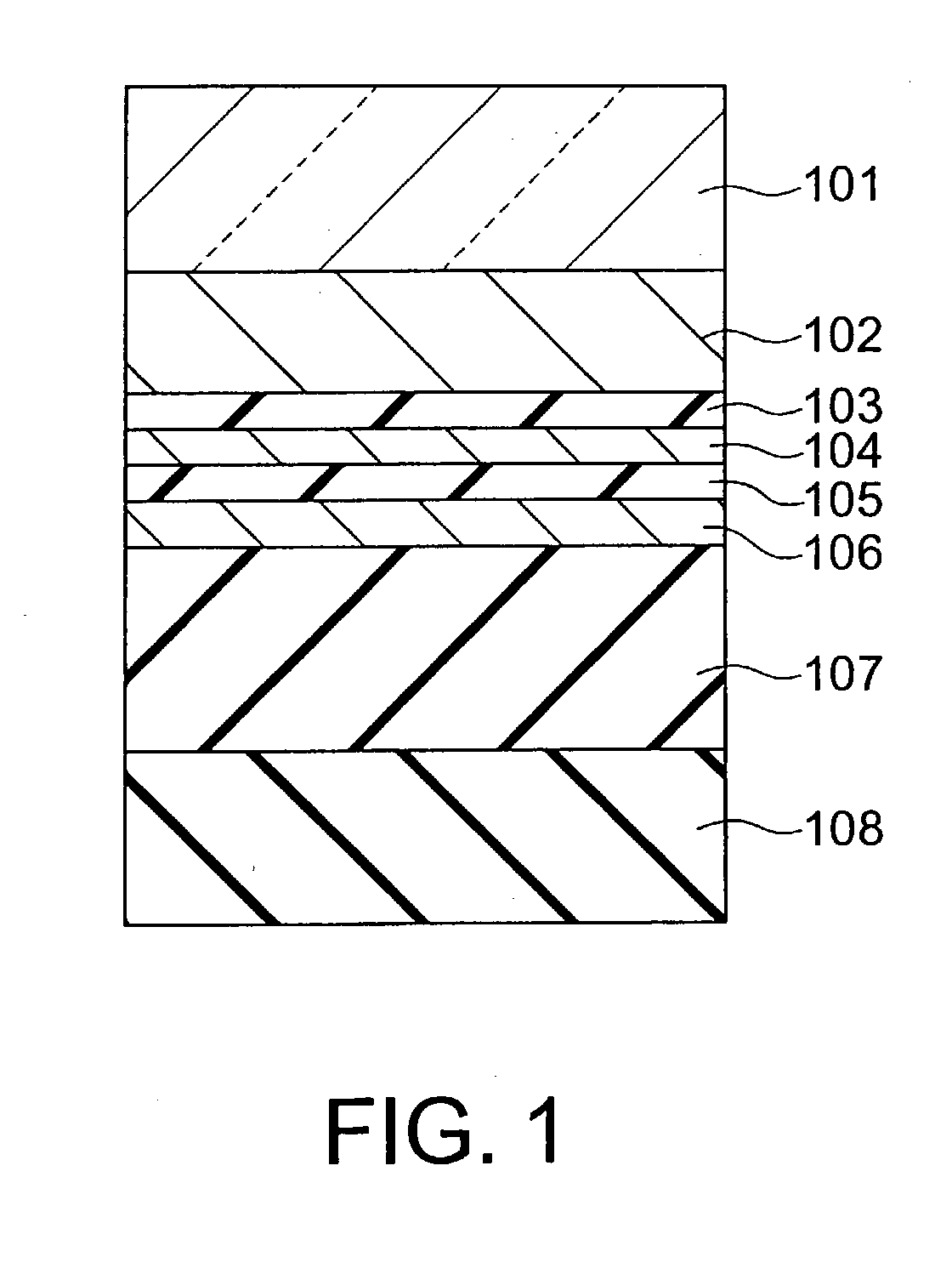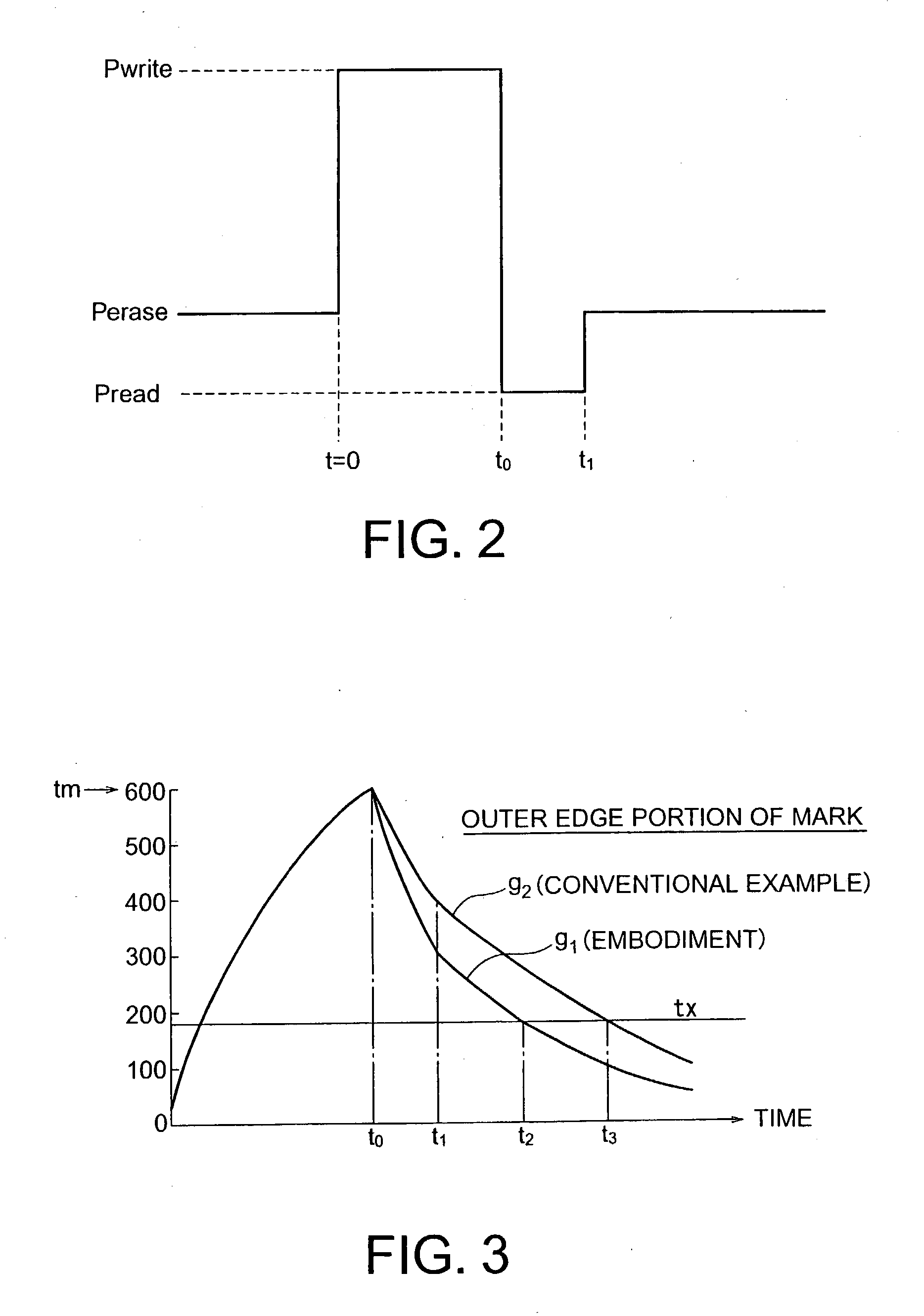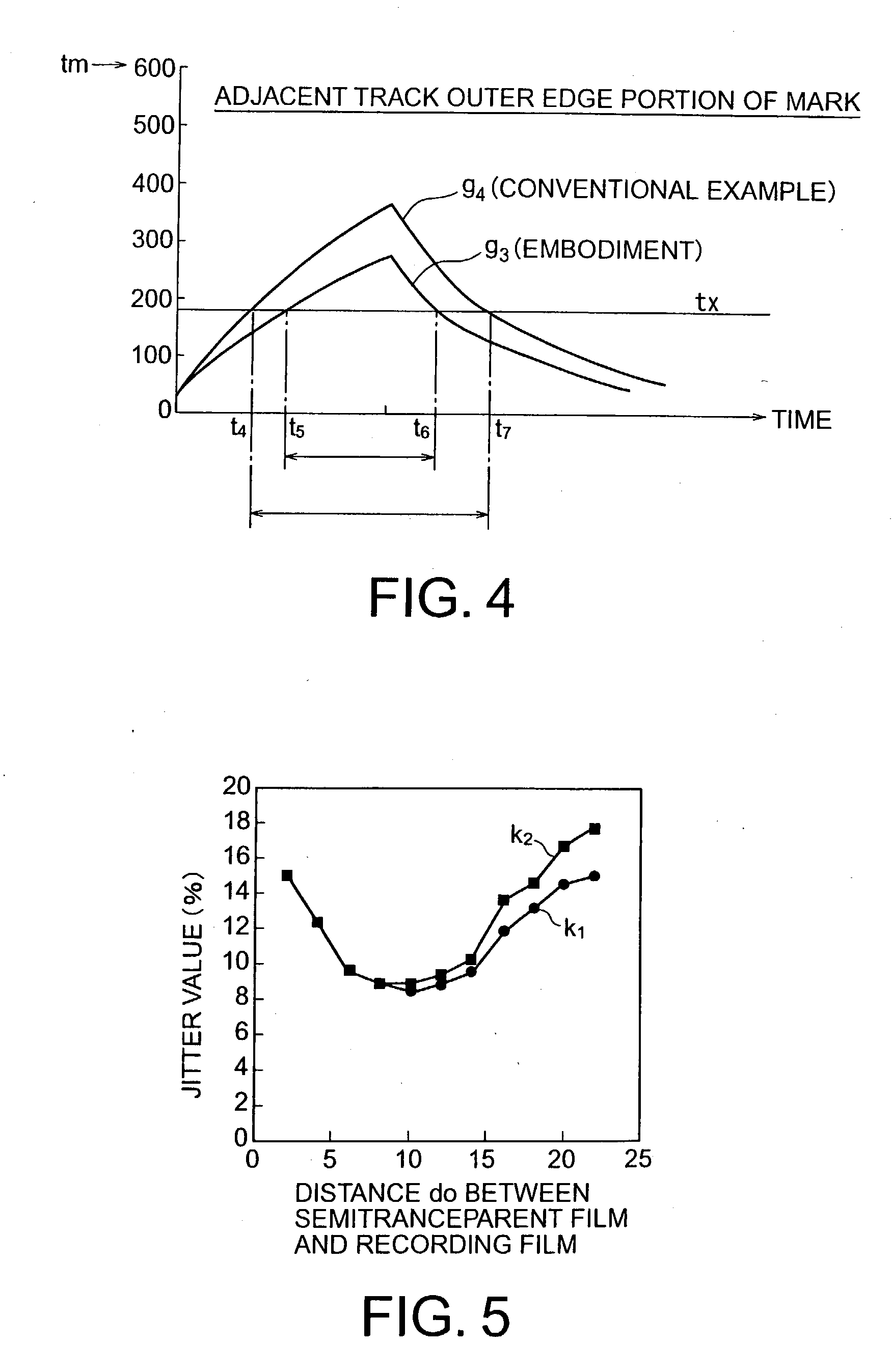Optical recording medium
a recording medium and optical technology, applied in the field of optical recording mediums, can solve the problems of easy errors, deterioration of information on a certain track, and deterioration of the recording mark of the track,
- Summary
- Abstract
- Description
- Claims
- Application Information
AI Technical Summary
Problems solved by technology
Method used
Image
Examples
first embodiment
[0043] (First Embodiment)
[0044] The construction of the first embodiment of a phase change optical recording medium according to the present invention is shown in FIG. 1. This phase change optical recording medium in the first embodiment satisfies the above described requests (1) to (3), and comprises a substrate 101 of, e.g., polycarbonate, a metal reflecting film 102 formed on the substrate 101, a transparent dielectric film 103 formed on the metal reflecting film 102, a semitransparent metal film 104 formed on the dielectric film 103, a transparent dielectric film 105 formed on the semitransparent metal film 104, a recording film formed on the dielectric film 105, a transparent dielectric film 107 formed on the recording film 106, and a cover layer 108 formed on the dielectric film 107.
[0045] This phase change optical recording medium in the first embodiment can reduce cross erase. Referring to the drawings, this will be described in detail. With respect to characteristics of the...
second embodiment
[0086] (Second Embodiment)
[0087] Referring to FIG. 9, the second embodiment of a phase change optical recording medium according to the present invention will be described below. The phase change optical recording medium in this embodiment has a construction wherein a metal reflecting film 202, a transparent dielectric film 203, a semitransparent metal film 204, a dielectric film 205, a recording film 206, a dielectric film 207, a semitransparent metal film 208 and a cover layer 209 are sequentially stacked on a substrate 201 of polycarbonate. That is, in the phase change optical recording medium in the first embodiment, another semitransparent metal film 208 is provided on the light incident side.
[0088] The features of this embodiment are as follows. In the conventional construction shown in FIG. 10, i.e. in the construction wherein three layers of dielectric / semitransparent film / dielectric film are provided between a recording film 304 and a metal reflecting film 302, it is not po...
PUM
 Login to View More
Login to View More Abstract
Description
Claims
Application Information
 Login to View More
Login to View More - R&D
- Intellectual Property
- Life Sciences
- Materials
- Tech Scout
- Unparalleled Data Quality
- Higher Quality Content
- 60% Fewer Hallucinations
Browse by: Latest US Patents, China's latest patents, Technical Efficacy Thesaurus, Application Domain, Technology Topic, Popular Technical Reports.
© 2025 PatSnap. All rights reserved.Legal|Privacy policy|Modern Slavery Act Transparency Statement|Sitemap|About US| Contact US: help@patsnap.com



